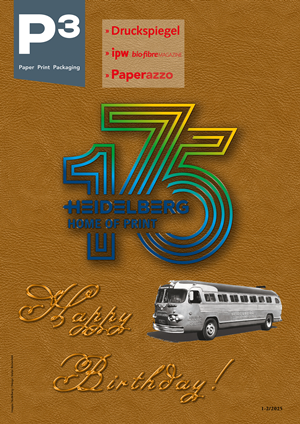P3 7-8/2023 en
Sustainable Paper Production
What Makes Schoellershammer PM 6 the Benchmark for Energy Efficiency
Sustainability
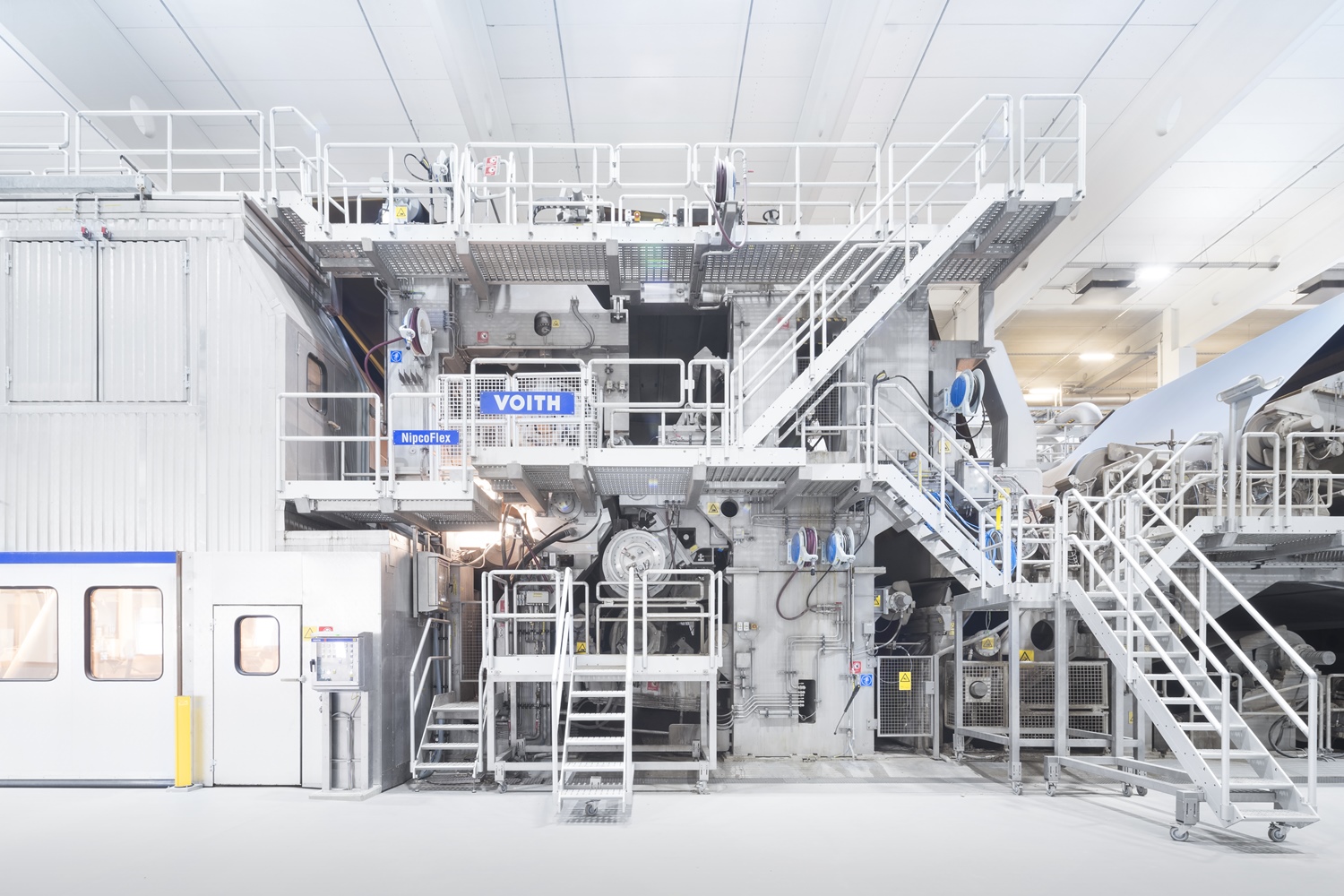
The solutions by Voith offered excellent possibilities to meet a central requirement of the paper manufacturer: high energy efficiency.
Today, it is more important than ever for paper manufacturers to produce sustainably in order to minimize environmental impact, meet customer requirements, comply with legal requirements and increase resource efficiency. Sustainable processes not only contribute to long-term business success, but also support the entire industry on the path to sustainability. The example of the Schoellershammer paper mill in Düren shows how these goals can be achieved with appropriate solutions from Voith.
The solutions by Voith offered excellent possibilities to meet a central requirement of the paper manufacturer: high energy efficiency.
The impetus for the new machine goes back several years. At that time, Schoellershammer wanted to expand its range of packaging materials. In order to be able to produce efficiently here, the company decided to invest in another paper machine, the PM 6. It was to produce packaging papers in the basis weight range of 80 to 120 g/m2 to complement the PM 5. The goal was to achieve an annual production capacity of 535,000 tons of packaging paper with both machines.
Schoellershammer chose Voith as its partner for this project. Above all, two reasons spoke in favor of the global technology company: First, as full-line supplier, Voith was able to optimally coordinate and seamlessly integrate all components of the entire production process – the paper machine, stock preparation and sludge and rejects system. Second, the Voith solutions offered excellent possibilities to meet a central requirement of the paper manufacturer: high energy efficiency. The goal was to set new standards in the packaging paper sector in Germany.
To achieve this goal, Schoellershammer relied on the BlueLine stock preparation system and XcelLine paper machine from Voith, which were successfully commissioned in December 2016. The solutions are optimally coordinated and have been continuously optimized so that the current annual consumption figures of PM 6 are impressive. For each ton of finished paper produced, only about 1.27 tons of steam are required at a speed of 1,200 meters per minute. Electricity consumption totals only 288 kWh per ton of saleable paper produced, with stock preparation requiring only around 60 kWh/t.
These are impressive figures when you consider that the specific energy consumption per ton in many paper mills, especially in stock preparation, is significantly higher. The electricity required to produce one ton of paper averages 530 kWh/t, with recovered paper stock preparation causing a specific electricity requirement of 260 kWh/t.1 In the production line, three areas in particular are the focus of resource savings: the disc filter system, the press concept and the dryer section hood with heat recovery.
“The cooperation with Voith has enabled us to set new standards in sustainable paper production,” confirms Armin Vetter, Managing Director Production and Technology at Schoellershammer. “Thanks to the BlueLine stock preparation system and the XcelLine paper machine, we have achieved high energy efficiency and can produce packaging papers in a resource-saving way. Voith technologies, such as the InfiltraDiscfilter (IDF) and DuoCentri NipcoFlex technology, contribute to efficient water use and energy savings. The EcoHood dryer section hood enables extensive heat recovery and optimum operating efficiency. Our trust in Voith has paid off, we are extremely satisfied with the solutions.”
Efficient water use and energy savings with Voith's InfiltraDiscfilter (IDF) and HiCon 2.0 technology
The PM 6 operates with Voith's InfiltraDiscfilter (IDF) disc filter system. These filters are among the decisive factors for economical water consumption in production. Thanks to the excellent and reliable filtrate quality, the wastewater quantity and freshwater requirement can be set to a low level without process stability suffering. The super clear filtrate produced allows wastewater treatment to be operated without pretreatment. This is unique to date and can only be achieved reliably with InfiltraDiscfilters. Today, the filters are equipped with modern FloWing filter discs. Fewer impurities in the process water result in less downtime and less maintenance. All BlueLine solutions contribute significantly to the exceptionally low energy consumption of stock preparation.
The TwinPulp LC pulping system from Voith is characterized by the efficient use of Intensa technology. This technology enables fast and thorough mixing of the suspension in the pulper. The specially designed tank of the pulper works in conjunction with the eccentrically arranged rotor to generate optimum turbulence. As a result, mixing of the slurry is faster and bale intake is accelerated. The modern cleaner system, screening systems and disc filters enable feed-forward concepts and high stock consistencies to be realized. As a result, in addition to the energy requirements of the process machines, the power consumption of the process pumps can also be significantly reduced.
To further increase efficiency, Schoellershammer not only relies on proven processes, but also integrates new, innovative automation and digitalization solutions from Voith. Thanks to an innovative reject ejection system, the system reliability of high consistency cleaning is significantly increased and maintenance is reduced at the same time. Another groundbreaking solution enables reliable measurement of dirt particles in the accepts. On this basis, concepts are being developed with which fiber losses can be further reduced. Through the combined use of these technologies in conjunction with other solutions, the concept of autonomous stock preparation can be successfully implemented step by step. The main objective of autonomous stock preparation is to continuously reduce fiber losses and energy consumption, taking into account resource costs. In addition, the reduction of manual interactions optimizes operational stability and reliability, and visualization improves cost and performance overview.
Thanks to various efficient process solutions and optimized freshwater consumption of individual products and sections, the freshwater savings of PM 6 are considerable. It now only requires 3.3 cubic meters of freshwater and 2.5 cubic meters of wastewater per ton of paper produced. By way of comparison, the German Environment Ministry assumes an average freshwater consumption of around 10 cubic meters per ton for OCC plants.2 Packaging papers made from recovered paper are produced today with an average freshwater consumption of 6.5 cubic meters of freshwater per ton.3
Optimum resource efficiency and quality enhancement with Voith's DuoCentri NipcoFlex technology
Voith's shoe press system also optimizes the PM 6 in terms of energy and water savings. Here, the DuoCentri NipcoFlex technology proves its worth, enabling maximum dewatering of the paper stock, accelerating dewatering and shortening drying time, thus increasing production speed and resource efficiency. Thanks to a uniform and specially designed pressure shoe, higher wet compaction is enabled, thereby improving strengths compared to a roll press.
The optimized dewatering reduces energy consumption and has a positive effect on water consumption. The DuoCentri NipcoFlex enables efficient dewatering of the pulp, resulting in a lower moisture content of the paper web. This can reduce water consumption in paper production.
Sustainable heat recovery and energy efficiency with the EcoHood dryer section hood from Voith
The Voith EcoHood dryer section hood helps increase the energy efficiency and sustainability of the PM 6. Its closed design fully insulates the dryer section while allowing safe access for operation and maintenance. Compared to open or less well-sealed hoods, the EcoHood's tight and modular design allows little heat and moisture to enter the hall. As a result, almost all the water that evaporates during paper drying can be used efficiently in the heat recovery system. This not only has a positive effect on the hall climate, but also actively protects the building.
Two factors play a decisive role in the efficient use of the energy used in drying. First, it is important to capture as much vapor as possible so it can be used for heat recovery. Second, the dew point of the hood affects the power and steam consumption of the process air system. The higher the dew point, the lower the required supply and exhaust air volumes and thus the electricity and steam consumption. The EcoHood meets these requirements and enables optimum operating efficiency for multi-stage heat recovery systems, for example, for hall heating, supply air and water heating or in combination with a heat pump.
The issue of energy costs will undoubtedly continue to preoccupy the industry. In view of the energy crisis, it is becoming clear how urgently manufacturers need technologies that help them save resources. The example of Schoellershammer demonstrates the possibilities. After several years of efficient plant operation, the paper manufacturer is very satisfied with the technology. The investment in Voith's proven and efficient solutions has paid off.
1 Cf. Navigant Energy Germany GmbH (2020): Energiewende in der Papierindustrie, p.10 ff, URL: https://www.bmwk.de/Redaktion/DE/Downloads/E/energiewende-in-der-industrie-ap2a-branchensteckbrief-papier.pdf?__blob=publicationFile&v=4.
2 Federal Environment Agency (2023): Pulp and Paper Industry, https://www.umweltbundesamt.de/themen/wirtschaft-konsum/industriebranchen/holz-zellstoff-papierindustrie/zellstoff-papierindustrie#anlagenbestand-in-deutschland.
3 The Paper Industry (2020): Water and Residue Survey in the German Pulp and Paper Industry 2020, Wochenblatt der Papierfabrikation 6th edition 2022, p. 58.
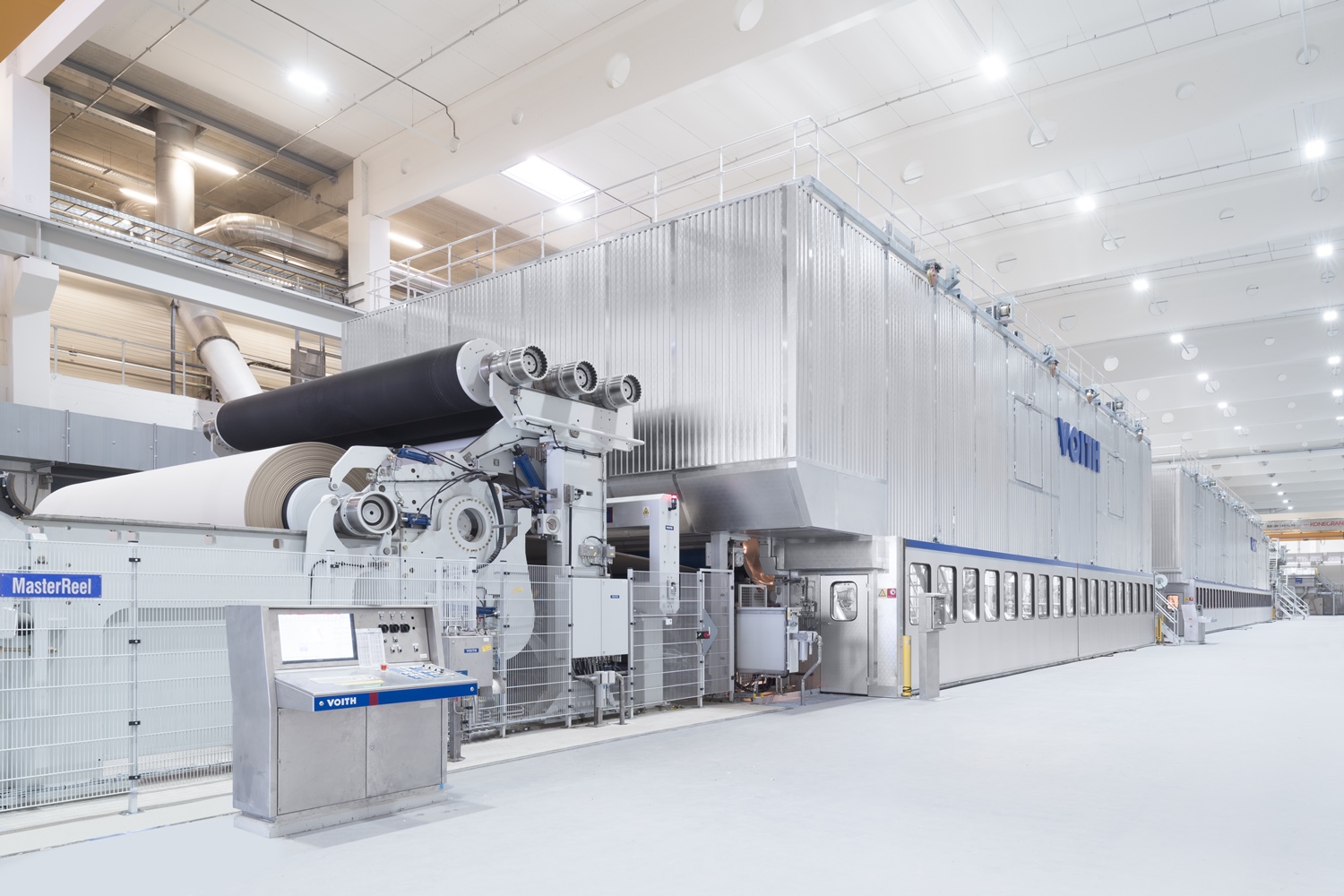
Today, it is more important than ever for paper manufacturers to produce sustainably in order to minimize environmental impact.
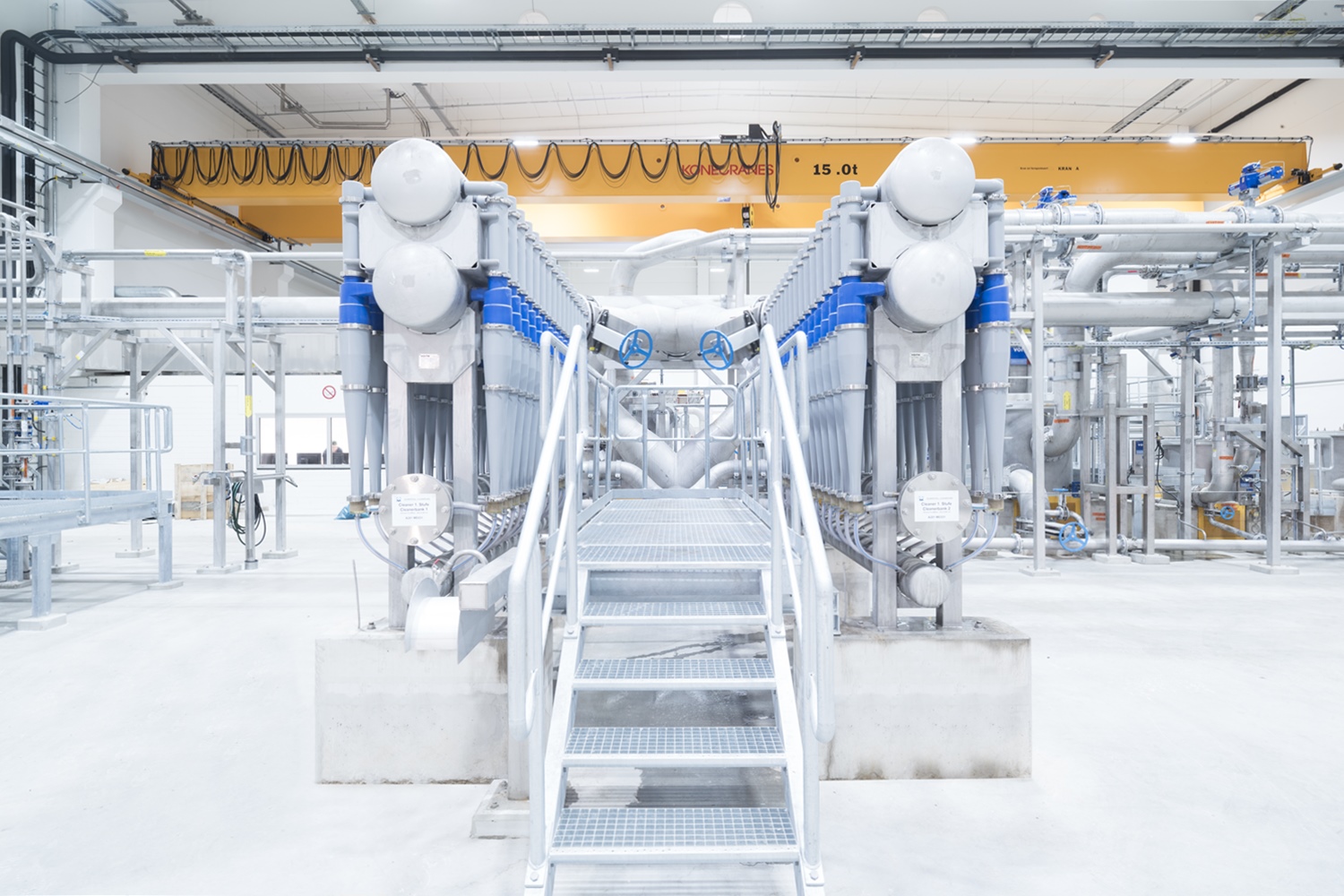
PM 6 operates with Voith's InfiltraDiscfilter (IDF) disc filter system. These filters are among the decisive factors for economical water consumption in production.
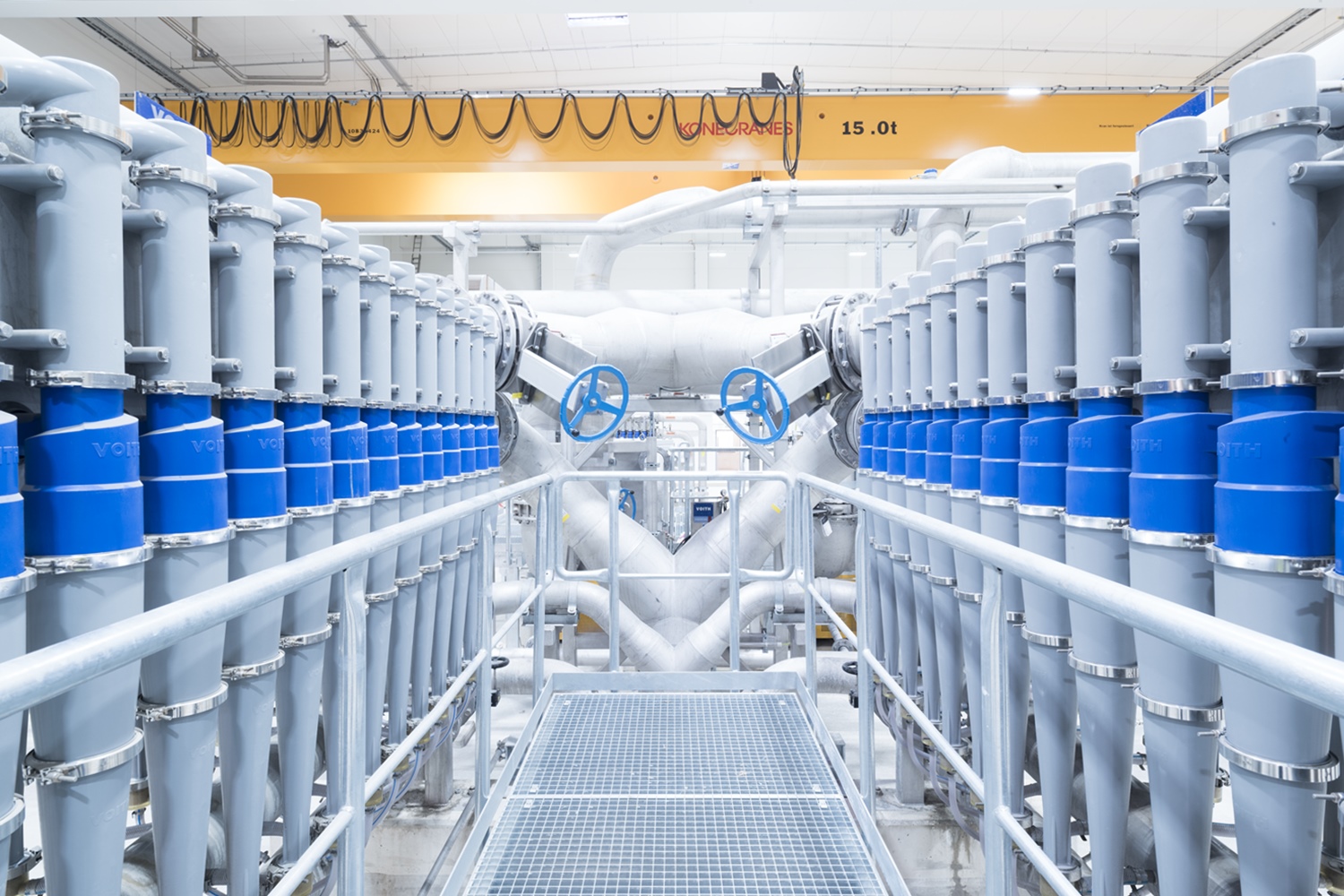
The TwinPulp LC pulping system from Voith is characterized by the efficient use of Intensa technology, enabling fast and thorough mixing of the suspension in the pulper.
Authors: Falk Albrecht, Naomi Keitel, Andreas Schaefer, Torben Schlieckau, Philip Schnellinger
Editor: sbr
Images: Voith

